Content
The beneficial properties of hogweed are closely related to its dangerous qualities. Although most plant species are poisonous, with basic care, they can be used to treat disease.
What it looks like and where it grows
Hogweed is a herbaceous plant from the Umbrella family with a biennial or perennial life cycle. It has a powerful stem up to 5 m tall, hollow from the inside, and a yellowish-white root. Large pinnately or tripartite leaves are sessile at the apex and on long petioles at the ground surface. Plates can be bright green or yellowish in color.
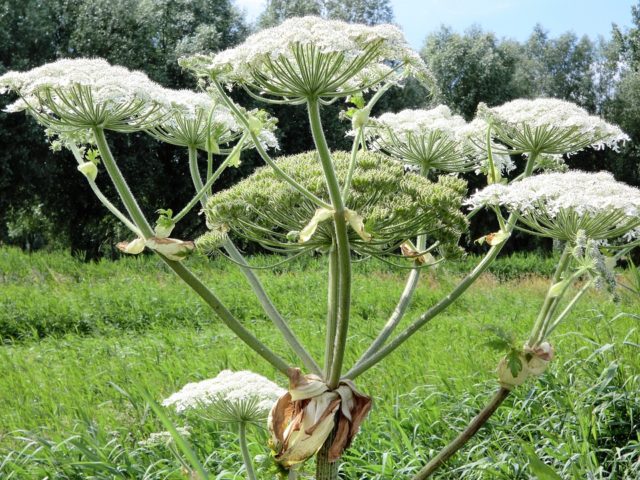
Perennial flowering continues throughout the summer. The individual buds of the plant are small, but fold into large, complex-shaped umbrellas with a white, pink or greenish-yellow color. By the fall, the perennial bears fruit - large flat achenes.
The plant is widespread in the temperate zone of the Eastern Hemisphere. It is found in the European part of Russia and in Western Siberia, in Kazakhstan, in the subalpine mountain belt, in North America. Most often, you can see tall grass along river banks, on forest edges, on wastelands and abandoned fields.
Varieties of hogweed
In Russia and Eastern Europe, the plant is represented by several dozen species. Some of them are safe and even suitable for food consumption, others are highly toxic and pose a danger to humans. Among the most famous varieties are:
- Sosnovsky hogweed (Heracleum sosnowskyi) - a very poisonous plant up to 3 m tall with white or pink flowers;
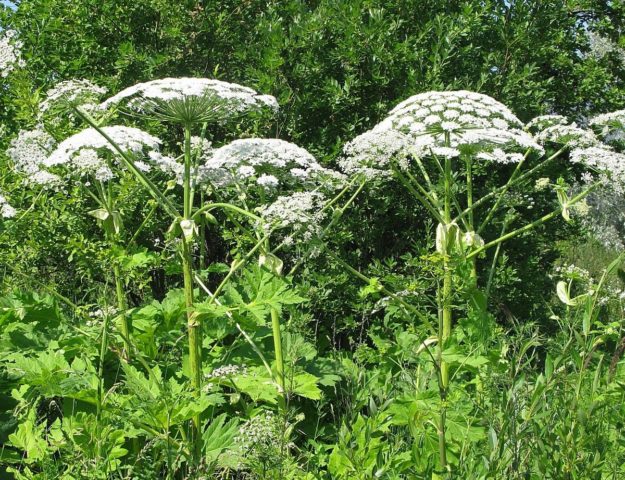 Despite its toxicity, Sosnovsky's hogweed is used in folk medicine
Despite its toxicity, Sosnovsky's hogweed is used in folk medicine - common hogweed (Heracleum sphondylium) - a fairly safe species with greenish-white umbrellas;
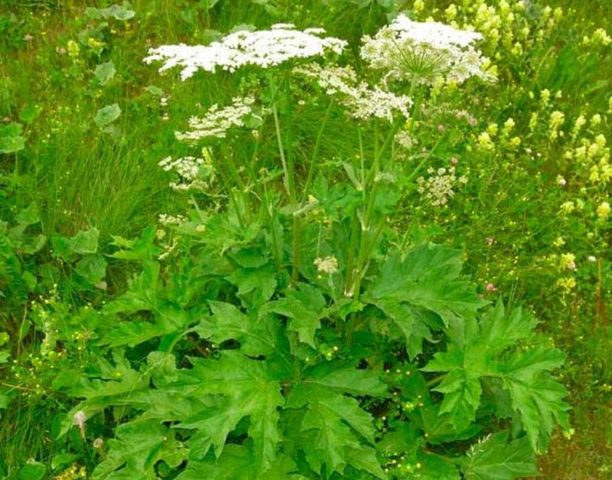 Common hogweed is often used in cooking.
Common hogweed is often used in cooking. - Siberian hogweed (Heracleum sibiricum) - the most popular of the medicinal species with yellowish-green flowers;
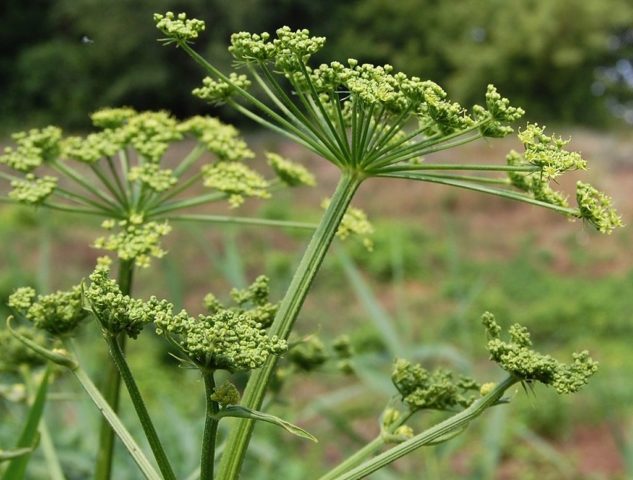 Siberian hogweed grows to an average of 1.8 m
Siberian hogweed grows to an average of 1.8 m - shaggy hogweed (Heracleum villosum) - a plant up to 1.5 m tall with white umbrellas, found in Asia Minor and the Caucasus.
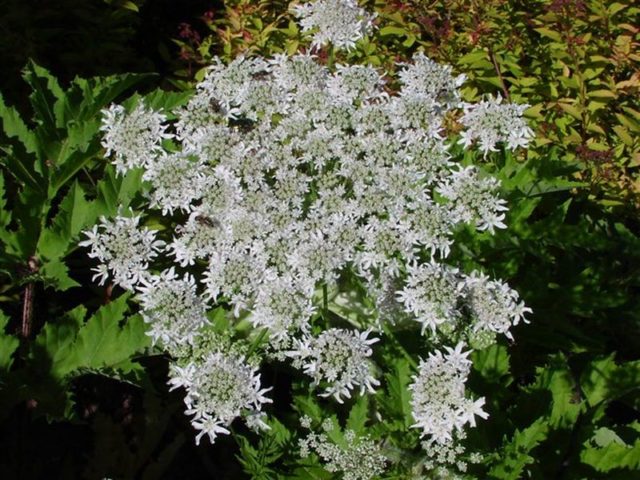 Shaggy hogweed is used to treat nervous disorders
Shaggy hogweed is used to treat nervous disorders
Chemical composition
The leaves, flowers and stems contain a large amount of valuable substances. The plant contains:
- tannins and fiber;
- sugars and essential oils;
- alkaloids and coumarins;
- ascorbic acid;
- B vitamins;
- vegetable protein;
- carotene;
- calcium, copper, nickel and boron;
- manganese, titanium and phosphorus;
- the amino acids tryptophan, lysine and arginine;
- araban and galactan;
- aldehydes;
- glutamine.
It is necessary to use the medicinal plant hogweed with caution and in small dosages. But with proper use, it has a positive effect on the state of the body.
Why is hogweed useful for human health
It is possible to use perennial according to proven recipes both external and internal methods. Medicinal herb:
- helps fight kidney and liver diseases;
- beneficial for eczema, furunculosis, ulcers and wounds;
- has a beneficial effect on dysentery;
- eases the condition with gallstone disease;
- helps with asthma;
- helps to improve well-being with lymphadenitis and various tumors;
- used for gynecological inflammation;
- improves appetite and helps with stomach upset.
You can use the herb to relieve pain and inflammation in trauma, sprains, muscle spasms and joint diseases.
Useful properties of Sosnovsky hogweed
Sosnovsky's poisonous hogweed is used by folk medicine in very small dosages and with great care. However, the properties of the plant are used for stomatitis and gingivitis.
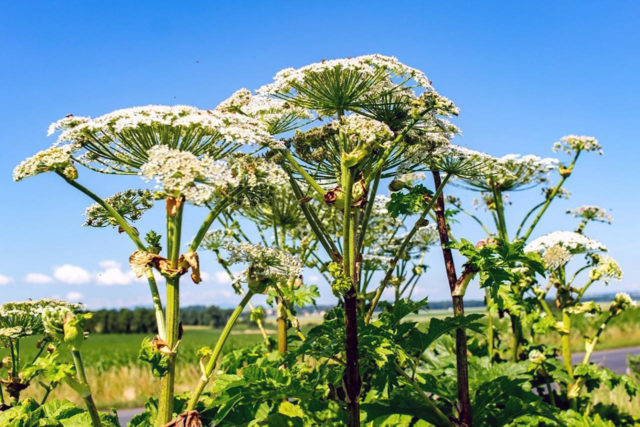
The benefits of Siberian hogweed
The benefits and harms of the Siberian hogweed are best known. A safe form is used for epilepsy, neurasthenia, convulsions and joint diseases. The leaves and stems, as well as the roots and seeds of the plant, can be used to treat dysentery and diarrhea, with stones in the gallbladder and kidneys.
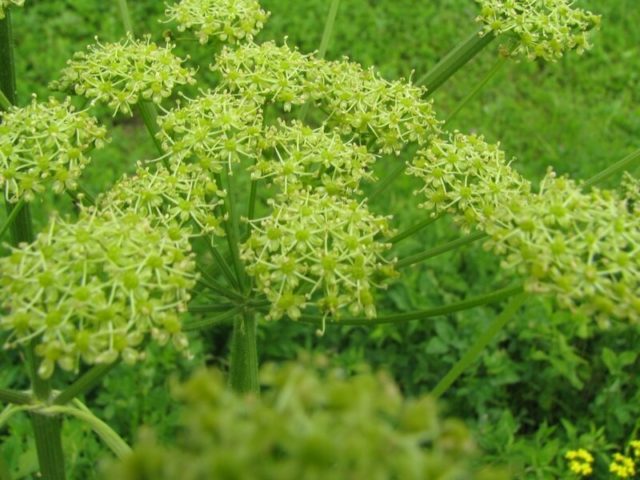
The benefits of common hogweed
Common hogweed is actively used in cooking, soups are made from it, added to seasonings and marinades. In folk medicine, the variety is used to treat gastric disorders and inflammatory ailments. The value of the common hogweed lies in its low toxicity, the plant has few side effects.
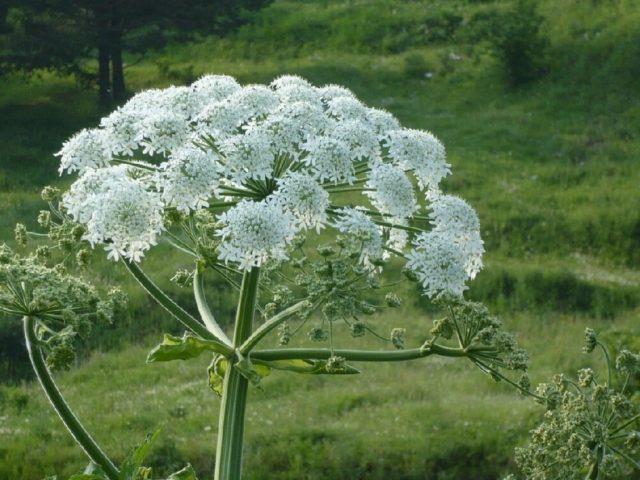
The benefits of furry hogweed
The shaggy look is used for the manufacture of home medicines for gastrointestinal disorders and gynecological inflammation. The benefit of edible hogweed is that the funds based on it help to remove small stones from the kidneys and gallbladder.
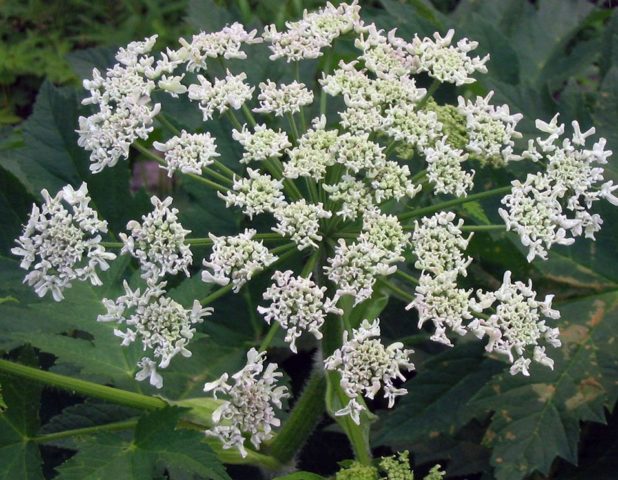
The benefits of hogweed soup
On the basis of ordinary, furry or Siberian hogweed, you can prepare a healthy and tasty soup. Usually, the herb is combined with sorrel and vegetables, meat broth and spices. The boiled plant has a mushroom flavor and gives an interesting flavor to the finished soup. In a country hike, you can replace carrots, cabbage or celery with hogweed stems and leaves.
The herbal soup is beneficial for the intestines and helps to regulate appetite. You can use it to normalize metabolism. A hot dish will help avoid vitamin deficiency, as well as strengthen the immune system and protect against infectious and viral diseases.
How can hogweed be used
Traditional medicine offers several ways to prepare hogweed. Any of the herbal remedies require careful handling but can be of great benefit.
Tincture
Alcohol tincture of the plant is used for cholelithiasis and inflammatory processes. The recipe looks like this:
- 100 g of chopped fresh or dry hogweed are poured with 500 ml of 70% alcohol;
- clog the container and put it in a dark place for a week;
- after the expiration of the period, pass the tincture through folded gauze.
You need to take the product twice a day, only 5-10 ml.

Infusion
For intestinal disorders and pain in the stomach, you can use an aqueous extract of a perennial plant. They do it like this:
- a large spoonful of chopped dry grass is poured with a glass of boiling water;
- kept under the lid for 20 minutes;
- passed through cheesecloth for filtration.
You need to drink the infusion in a glass twice a day until the condition improves.
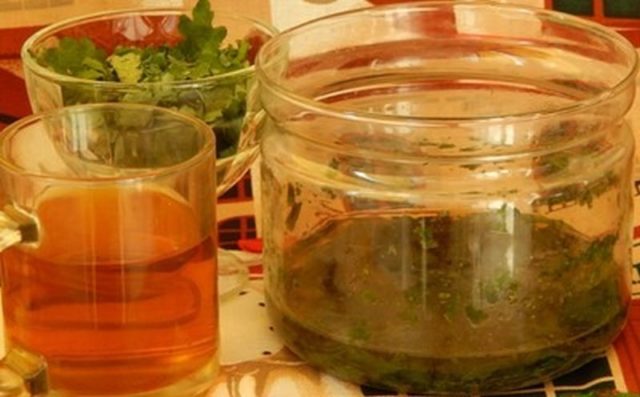
Decoction
With flatulence and diarrhea, the healing properties of the hogweed root have a good effect. The decoction recipe is as follows:
- the root is crushed in the volume of a large spoon;
- pour 250 ml of water;
- boil for seven minutes and remove from the stove;
- insist another half hour under the lid.
The strained broth is drunk up to twice a day, 150 ml.
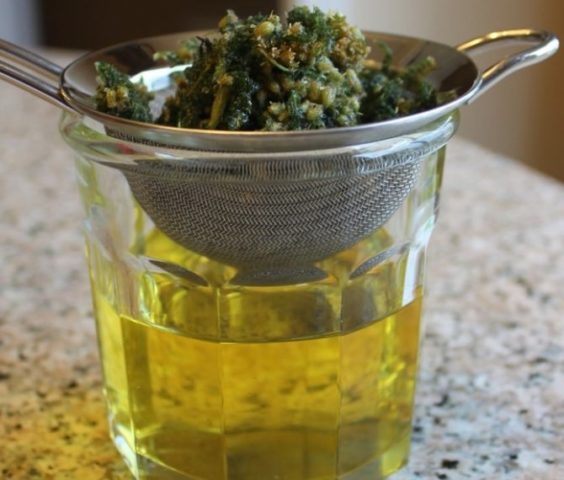
Extract
With convulsions, epilepsy and muscle spasms, an aqueous extract of cow parsnip helps well. They do it like this:
- a large spoonful of finely chopped roots is poured with a glass of water;
- boil over low heat until 2/3 of the original volume of liquid remains;
- cooled and passed through cheesecloth.
The remedy is consumed in a large spoon up to five times a day in between meals.
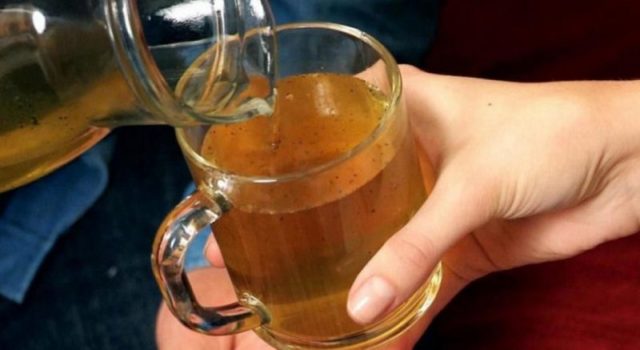
Powder
A useful powder is made from the seeds of Siberian, common or shaggy hogweed. It is very simple to prepare it - the raw material must be ground in a coffee grinder to a state of homogeneous dust.
Use 1/2 small spoonful of powder twice a day, the product can be diluted in natural honey.
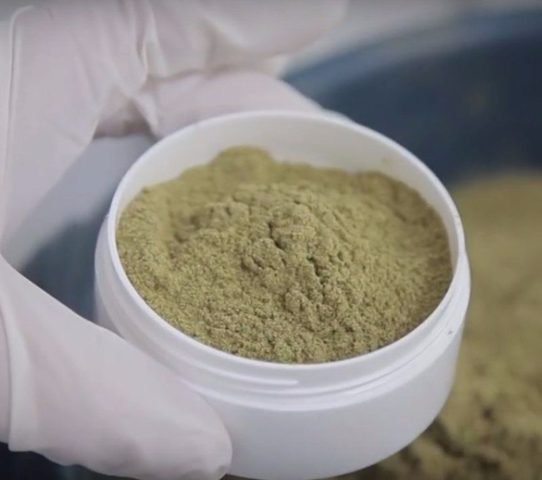
The use of hogweed in traditional medicine
It is necessary to use perennials for medicinal purposes according to proven safe algorithms. There are several popular plant-based recipes.
With intestinal colic
With abdominal cramps and sharp pains, such an infusion has a good effect:
- 25 g of dried herbs are poured into 400 ml of hot water;
- at room temperature, insist under the lid for two hours;
- squeeze the raw material and pass it through cheesecloth or fine sieve.
You need to take the medicine 75 ml three times a day on an empty stomach.
With gallstone disease
For small stones in the gallbladder, you can use a decoction of the plant root. The recipe looks like this:
- two large spoons of crushed raw materials are poured with a glass of boiling water;
- simmer the product over low heat for about ten minutes;
- in a closed form, insist for another hour and filter.
You need to consume the broth on an empty stomach three times a day. A single dosage is 50 ml.
For toothache
For inflammation of the mouth and toothache, you can use alcohol tincture. They do it like this:
- 20 g of crushed plant roots are poured with 200 ml of alcohol or vodka;
- leave the mixture overnight in a warm place;
- filter the medicine and dilute it with clean water in equal proportions.
Use the tincture for rinsing up to five times a day.
With rheumatism
Compresses with cow parsnip are good for joint pain with rheumatism and arthritis. They are made simply, fresh leaves of the plant are poured over with boiling water, and then wrapped in a layer of gauze and applied to the right place until you feel better.
For ulcers and wounds
The plant's anti-inflammatory properties are beneficial for skin irritation and damage. For medicinal purposes, the following infusion is prepared:
- 30 g of dry raw materials are poured into 350 ml of clean cold water;
- insist at room temperature for three hours;
- filter and squeeze the leaves.
Use the product four times a day, 30 ml. Additionally, the infusion can be used externally - for lotions and rubbing the skin.
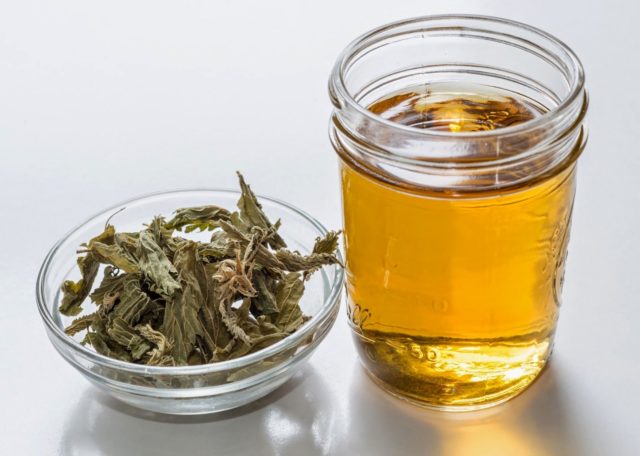
Cooking applications
The use of cow parsnip for food is allowed for common, Siberian and hairy species, they are the least dangerous. For cooking, young leaves and shoots are harvested before flowering. Before processing, they must be doused with boiling water or soaked in hot water according to a specific recipe.
Edible cow parsnip is used for making soups and marinades, seasonings and pickles. Sometimes the herb is even added to the filling for pies. It can be used in salads with vegetables and herbs, young shoots of the plant are suitable for sugaring.
Contraindications
The beneficial properties and contraindications of hogweed are closely related to each other. The plant should not be consumed when:
- stomach ulcer and hyperacid gastritis;
- tendency to constipation;
- hemorrhoids and fissures of the rectum;
- individual allergies;
- hypertension;
- pregnancy and lactation.
It is necessary for men to take plant-based products with caution - a perennial is able to suppress sex drive. It is required to strictly observe the dosage of medications, since when the permitted volumes are exceeded, side effects may develop - dizziness, migraines, itching and blisters on the skin.
Collection and procurement
You can collect perennials for medicinal purposes throughout the year. The leaves and stems of the plant are harvested in early spring or at the beginning of flowering, the seeds - in September, after the fruit ripens. You need to dig up the roots before the active growing season or late autumn, during these periods they contain the most valuable substances.
It is necessary to dry the medicinal plant in the fresh air under a canopy or indoors with good ventilation. Grass, roots and seeds are laid out in a thin layer on a baking sheet or a sheet of thick paper and ted up from time to time. To speed up the process, you can use an electric dryer or oven, in which case the temperature is set to no more than 50 ° C.
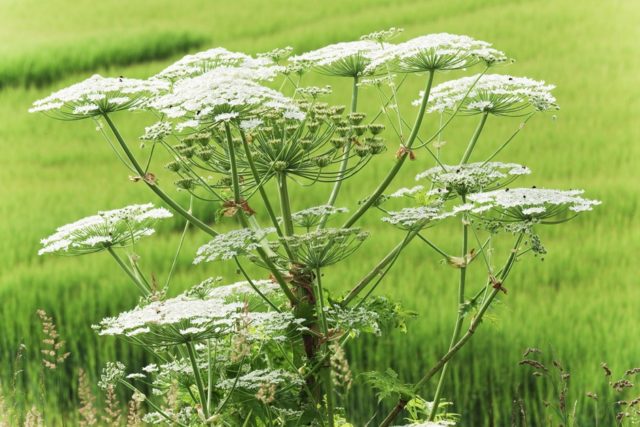
It is necessary to store the prepared hogweed in paper bags or cloth bags in a dark and dry place. Subject to all conditions, raw materials retain valuable qualities for up to two years.
When collecting hogweed of any kind, the phototoxicity of the plant should be taken into account. Harvesting is carried out exclusively in thick gloves, it is advisable to use also a face mask and goggles. The sap of the plant, when it comes into contact with the skin, causes a burn and leads to dermatitis. A blister appears on the affected area, gradually turning into a dark spot. Such damage heals for a very long time, up to six months. If the juice still gets on an open body, you must immediately rinse the area with water, apply a bandage with synthomycin ointment and close the affected area from the sun for several days.
Conclusion
The beneficial properties of hogweed are inextricably linked with its potential danger. It is important to observe small dosages and precautions when using the herb. When collecting, it is necessary to carefully check the species of raw materials so as not to confuse an edible plant with a poisonous one.

